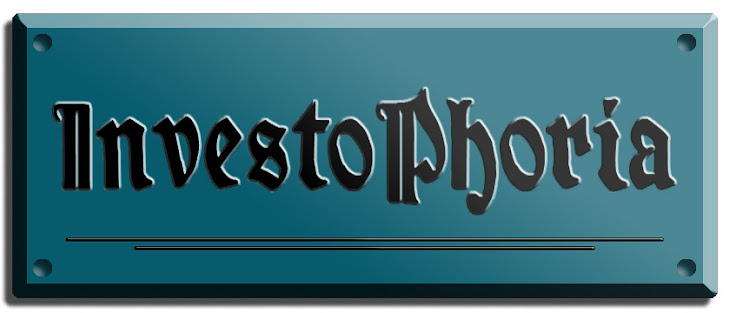
I recently read a pretty good article over at The Motley Fool called "the new subprime". Even though I think that Fool.com and its founders have gotten big enough that they are one-foot-in and one-foot-out of the "dumb money" category, the still do put out some decent articles on the macro state of things.
Yes, default rates across the board are up up up. Yes, commercial properties have over 50% higher vacancy rates than the majority of purchases in the last 5 years were financed for. Yes, the government created a legal/regulatory structure that FORCED banks to make loans to highly under-qualified buyers. Yes, they have TRILLIONS in off-balance-sheet assets that stink so bad I can smell them from here in Canada.
So what does this mean for you?
As I have been writing for some time, I think we are in the onset of a massive paradigm social shift. One that similarly took place during the Great Depression. What are the similarities up to this point?
- At least a decade of very easy credit, huge money supply expansion, and reckless lending purported by government intervention in the markets
- Massive over-expansion of housing sectors and the financial sector far beyond the ratio normally seen in a healthy, productive economy
- A huge deflation of the asset bubble everyone was high on
- A drop of about 40% in the market in a short period of time, followed by big government intervention
- A sucker's rally of over 35%
- An election of a Democratic president in the middle of all this
- Government intervention the scope of which did not historically exist in the US until the moment the president signed the stimuli into effect
- Huge government meddling into the banking system
Okay, so we've got what is similar. Actually eerily mirroring.
We are about at the point of massive government intervention in the banking system and at the top of a massive sucker's rally. What happened after this in the 1930's?
- A crushing decline over 2 years that wiped out 86% of the market's value
- Nationwide bank closures as undercapitalization withered away the financial system
- So much government "stimuli" (including paying farmers to NOT grow crops to keep prices up - do you think that helped unemployment???) that over 6 more years followed in which the economy was smothered and stifled until it was gasping for life
- A massive war which America's president decided to capitalize on
- finally the end...... after so much government-induced pain.
Is this what we have in store? Possibly.
I personally think it is going to be a lot worse. And I'm not peddling pessimism porn or anything like that. It's just that we don't have a gold standard today to limit the government's abilities to print/spend as much money as they damned well please. And we don't have a political structure that even slightly realizes how much long term DAMAGE government involvement in economics does. (Other than Ron Paul, who I honestly believe is the last hope for America).
And finally, America is not an emerging market anymore. It was an emerging market in the 1930s. After the war it was the world's largest creditor nation, having much of Europe sending interest payments across the Pond. It also had huge agriculture and manufacturing sectors as a percentage of GDP, making it extremely productive and causing the purchasing power of the dollar to remain strong (a surplus of goods and services versus the amount of currency - locked to a gold standard I might add - caused low prices and high prosperity).
But we don't have that today. America's government budget on average has increased multiple times as a percentage of GDP, meaning that less and less money is going to the host (private sector that actually PRODUCES stuff for profit) and more is going to the parasite (non-productive).
China is the America of today, in terms of global positioning. The new emerging superpower. I would suggest buying gold and silver, of course, but having some spare Yuan kicking around might not hurt either.
So how does one play this situation?
Well, I am waiting for another opportunity to short US treasuries by buying long-term Call Options on PST and TBT. I am also currently short the following companies:
Capital One Financial. September 2009 Put Options $20 Strike. 5 Contracts @ $1.85
Bank of America. November 2009 Put Options $11 Strike. 10 Contracts @ $1.45
Tessera Technologies. July 2009 Put Options $25.00 Strike. 5 Contracts @ $1.65
JP Morgan Chase. September 2009 Put Options $33.00 Strike. 5 Contracts @ 3.35
I am waiting for TBT to hit at least the mid-40's and PST to his around $47.00 - once they are at this point I will look strictly to the technicals for my entry point. I am also planning on buying Baffinland Iron mines at hopefully around $.40 - purchased them at $.17 last year and sold out at $.50 a few months back, if you remember.
Finally I think Neo Materials is a good long-term buy once they hit at least a 30% discount to NAV (They are trading at around 20% over currently). And of course Migao Corporation is another on my buy list when the technicals are looking good.
Happy trading all!





Everyone has their favorite way of using the internet. Many of us search to find what we want, click in to a specific website, read what’s available and click out. That’s not necessarily a bad thing because it’s efficient. We learn to tune out things we don’t need and go straight for what’s essential.
ReplyDeleteThis goal-oriented way of surfing the web is largely based on short-term results. For example, finding facts to write a blog post, doing a comparison before making a purchase and reading a news site to find out what’s happening right now.
www.onlineuniversalwork.com